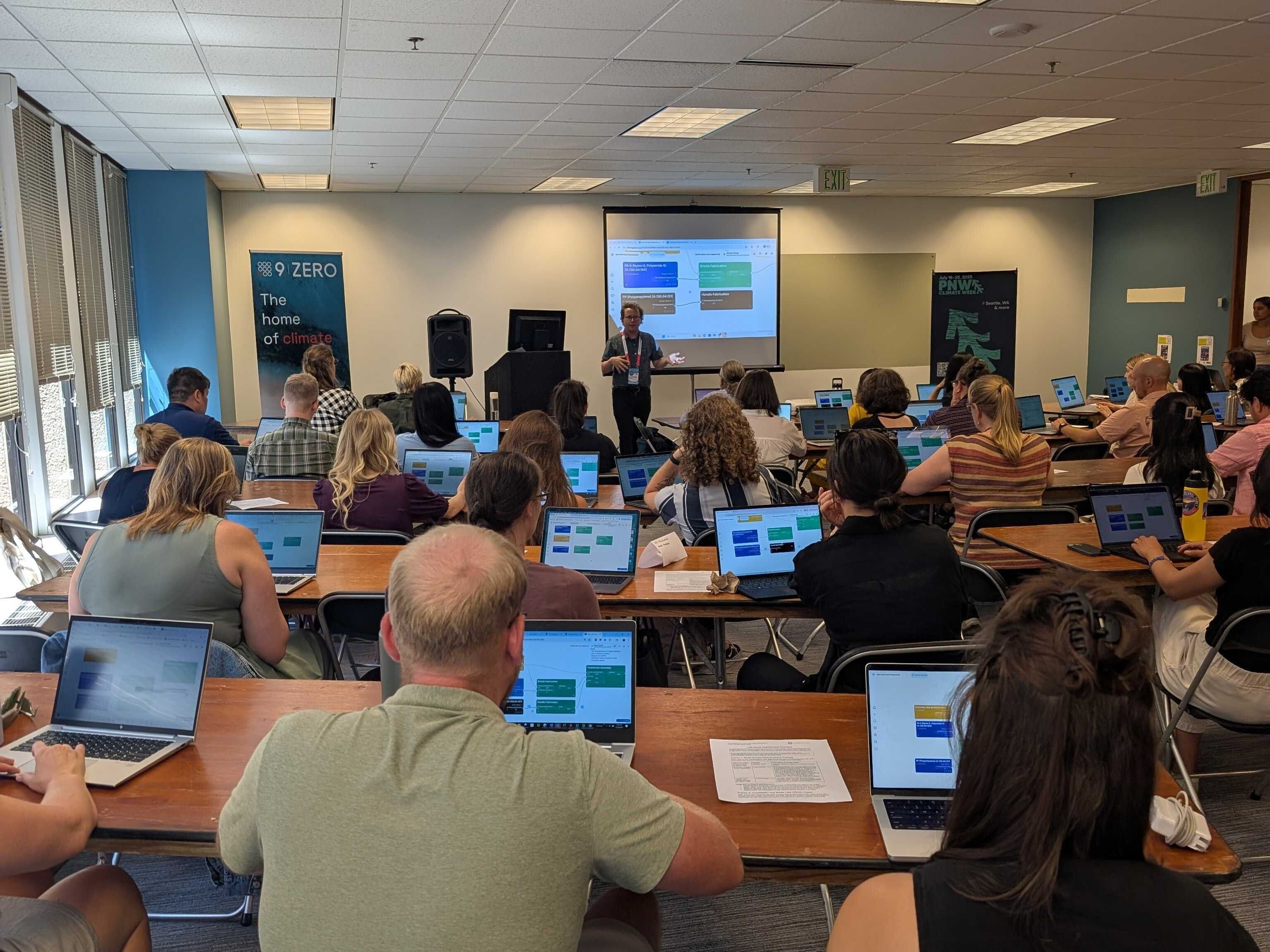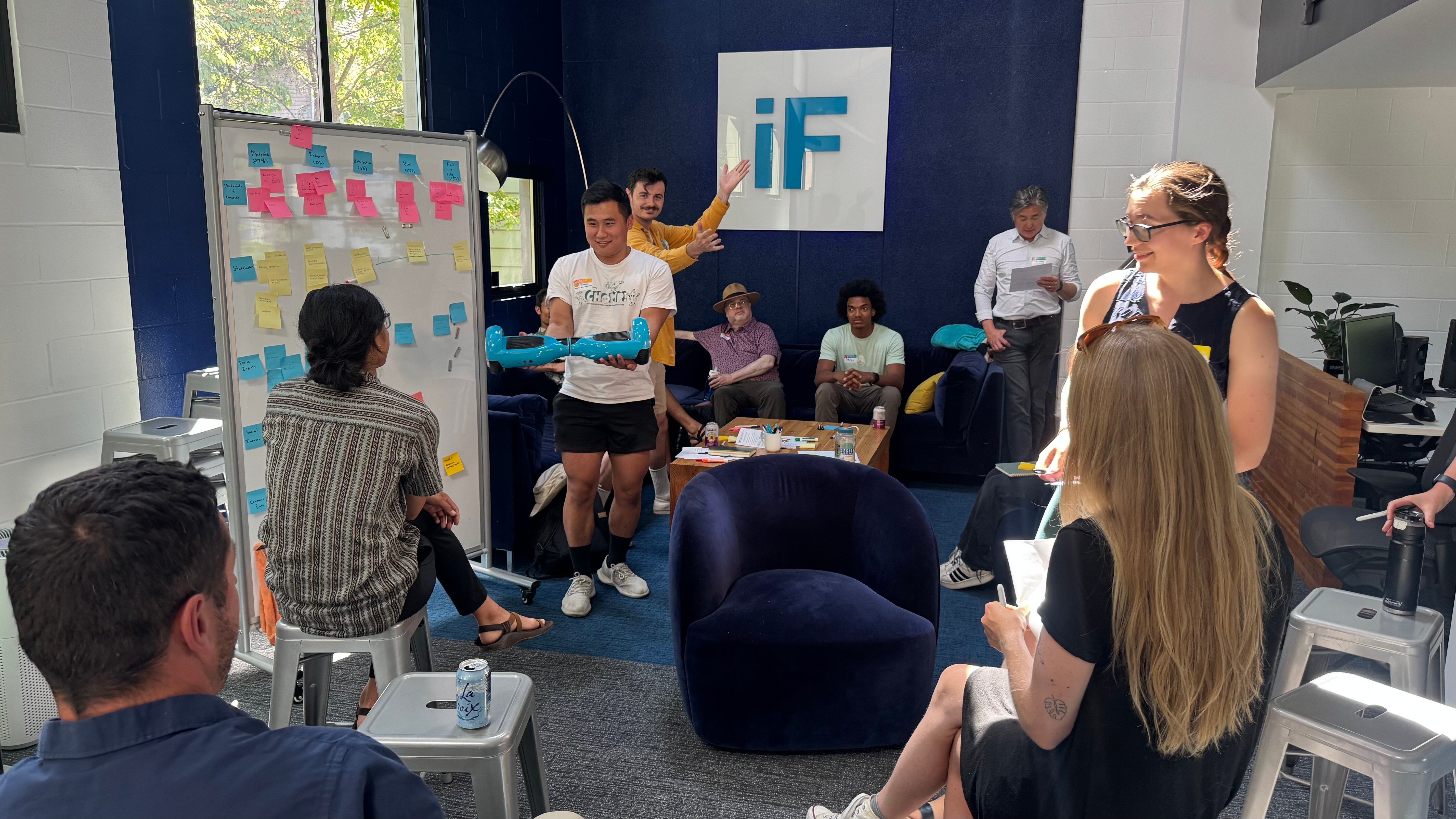What We Learned Together at PNW Climate Week 2025: Reflections from Two Hands-On Workshops
By Alex Crease, Sustainable Product Engineer at CarbonGraph
There’s something magical that happens when you put curious, driven people in a room together and ask them to imagine a better way to create products, systems, and processes.
I experienced that magic twice during PNW Climate Week 2025 through two workshops I co-led. The first, a Life Cycle Assessment workshop where I taught sustainability professionals how to conduct a Life Cycle Assessment from scratch. The second, a Sustainable Design workshop where we completely reimagined common household products. Over 100 people showed up across both events with contagious energy, thoughtful questions, and the willingness to roll up their sleeves and dive right in.
In both workshops, we didn’t just talk about sustainability. We got hands-on.
Teaching Life Cycle Assessments to Beginners

Teaching Life Cycle Assessments to a room full of sustainability-curious professionals.
In my first event, Conducting Your First Life-Cycle Assessment: A Hands-On Workshop, we got into the weeds with environmental data and walked step-by-step through building an LCA in CarbonGraph. By the end of the 2 hour workshop, everyone had created an LCA of a toothbrush and analyzed the environmental impact of several design decisions. Participants asked great questions about datasets, assessment scoping, allocation methods, and more. You can check out a very similar talk I gave in a webinar recording here - including step-by-step instructions to build your first LCA model!
What stood out here was the moment it clicked for participants: when they literally “clicked” material flows together in CarbonGraph and found for themselves how easy it was to model a product and generate reduction roadmap insights. But even more than that, a participant told me they loved the workshop because “it made LCAs approachable, engaging, and fun.” That’s exactly why we built CarbonGraph.
Reimagining Products for a Sustainable Future

A team of participants pitching their findings: they were asked to make toy hoverboards more sustainable, and ended up designing a community toy library built for community toy sharing, reuse, and repair.
The next day, I co-led the Sustainable Redesign Lab with our friends at The Sustainable Design Project, Intentional Futures, and Sustainability Creatives. Picture this: a three-story venue full of buzzing conversations, tables covered in post-its, and teams huddled around everyday objects — anything from pool toys to speakers — reimagining them with sustainability front-and-center.
We kicked off by diving into value chains — tracing the journey of a product from raw materials to disposal, and identifying where the biggest impacts occur. Teams analyzed their real products using LCA data from CarbonGraph alongside contextual business scenarios. Next they moved into ideation, leveraging circular design principles to reimagine what the product could be, and how it might even regenerate nature and communities instead of degrading it.
The final challenge? Turn those concepts into viable business models. Teams pitched their new concepts with sketches, storyboards, and system maps. What emerged were toy libraries, modular speaker systems, kitchen equipment that reduces food waste, and more. Some concepts were practical. Others were wildly imaginative. But all of them were grounded in systems thinking and real-world constraints.
What struck me most was watching people shift from individual product ideas to systems thinking. Participants all pushed each other to think not just about “the product,” but the business model, and how that influences the whole ecosystem the product is a part of.
Key Takeaways
Across both workshops, a few themes kept coming up:
- System thinking is no longer optional. Products don’t exist in isolation, and neither do our decisions. The way we tackle sustainability issues, from LCAs to design solutions, must involve the systemic context that a product, process or experience exists in.
- You don’t need to be an LCA expert to start measuring product impact. Just like you don’t need to be a professional photographer to take great photos. You just need the right tools, the right mindset, and a little guidance.
- Creative collaboration is the unlock for sustainability innovation. Some of the best ideas and discussions came when participants from wildly different industries and professions tackled a problem together. So step out of your organizational silos and tackle sustainability issues as a cross-functional team!
Huge thanks to everyone who attended, asked hard questions, and shared their experiences. You made the sessions what they were: engaging, inspiring, and fun.
If you couldn’t make it, stay tuned. We’ll be hosting more online LCA sessions soon, and I’d love for you to join us. In the meantime, if you’re curious about how CarbonGraph helps you turn sustainable design into something measurable and defensible, drop me a message. I’m always happy to talk about product development, systems design, and how we can make things better by making better things – with better data.
Let’s keep creating a sustainable future together!
— Alex
Share
Got a Product in Mind? Let's Model It Together.
Tell us what you're working on, and we'll show you how CarbonGraph can bring it to life with environmental insights.